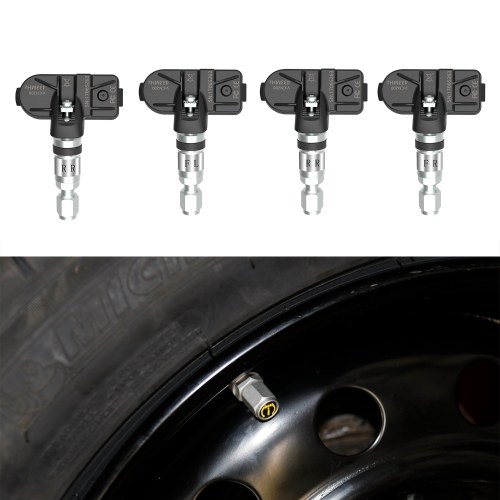The purpose of the tire pressure monitoring system (TPMS) in your vehicle is to warn you that at least one or more tires are significantly under-inflated, possibly creating unsafe driving conditions. The TPMS low tire pressure indicator is a yellow symbol that illuminates on the dashboard instrument panel in the shape of a tire cross-section (that resembles a horseshoe) with an exclamation point.
That indicator light in your vehicle has a history. It’s a history rooted in years of uncertainty about proper tire pressure and many serious car accidents that might have been avoided had drivers known their air pressure was low. Even now, it’s estimated that a substantial number of vehicles hit the road each day with underinflated tires. However, proper tire maintenance with the aid of a TPMS can and does help prevent many serious accidents.
Before this indicator light became commonplace, knowing whether your air pressure had reached unsafe levels meant getting out, crouching down, and using a tire gauge. With few exceptions, this was the only pressure-checking tool ordinary consumers had at their disposal.
Then, in response to a surge in accidents due to underinflated tires, the US government passed the Transportation Recall Enhancement, Accountability, and Documentation (TREAD) Act. One of the outcomes of this legislation is that most vehicles sold in the United States since 2007 include a tire pressure monitoring system of some kind.
Not every TPMS works the same way. The illumination of the low tire pressure indicator represents the final step in the process of either an indirect TPMS or a direct TPMS.
An indirect TPMS typically relies on wheel speed sensors that the anti-lock brake system uses. These sensors measure the rate of revolution each wheel is making and can be used by on-board computer systems to compare with each other and to other vehicle operation data such as speed.
Based on the rate of revolution of each wheel, the computer can interpret the relative size of the tires on your vehicle.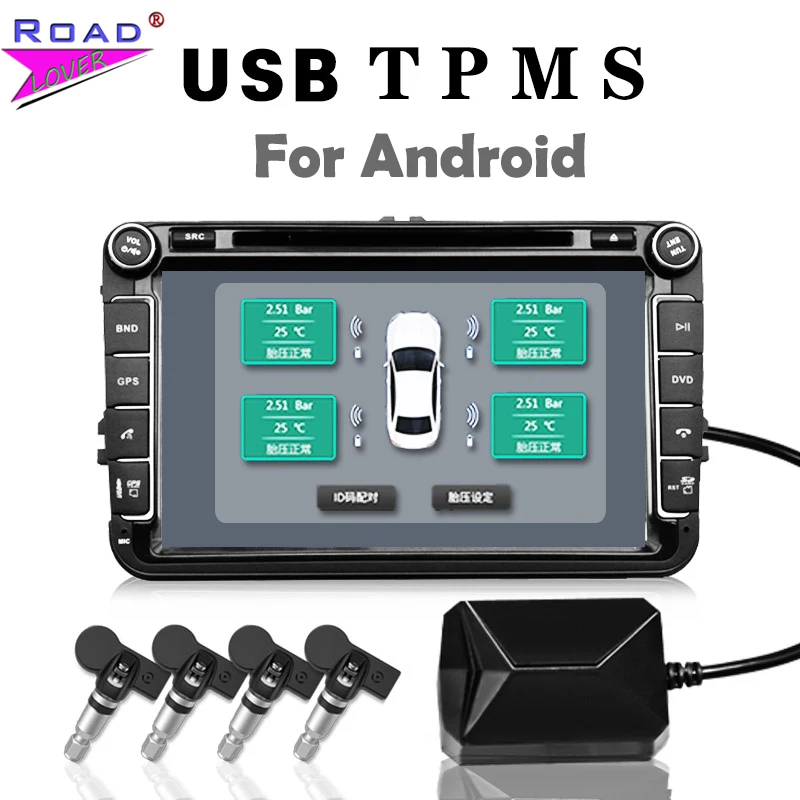 When a wheel starts spinning faster than expected, the computer calculates that the tire is underinflated and alert the driver accordingly.
When a wheel starts spinning faster than expected, the computer calculates that the tire is underinflated and alert the driver accordingly.
So, an indirect tire pressure monitoring system doesn’t actually measure tire pressure. It’s not electronically processing the same kind of measurement you might see with a tire gauge. Instead, an indirect tire pressure monitor simply measures how fast your tires are rotating and sends signals to the computer that will actuate the indicator light when something in the rotation seems amiss.
-- Relatively inexpensive compared to a direct TPMS
-- Requires less programming/maintenance over the years than a direct TPMS
-- Less overall installation maintenance than its direct counterpart
-- May become inaccurate if you purchase a bigger or smaller tire
-- May be unreliable when tires are unevenly worn
-- Must be reset after properly inflating every tire
-- Must be reset after routine tire rotation
Direct TPMS uses pressure monitoring sensors within each tire that monitor specific pressure levels – not just wheel revolution data from the anti-lock brake system.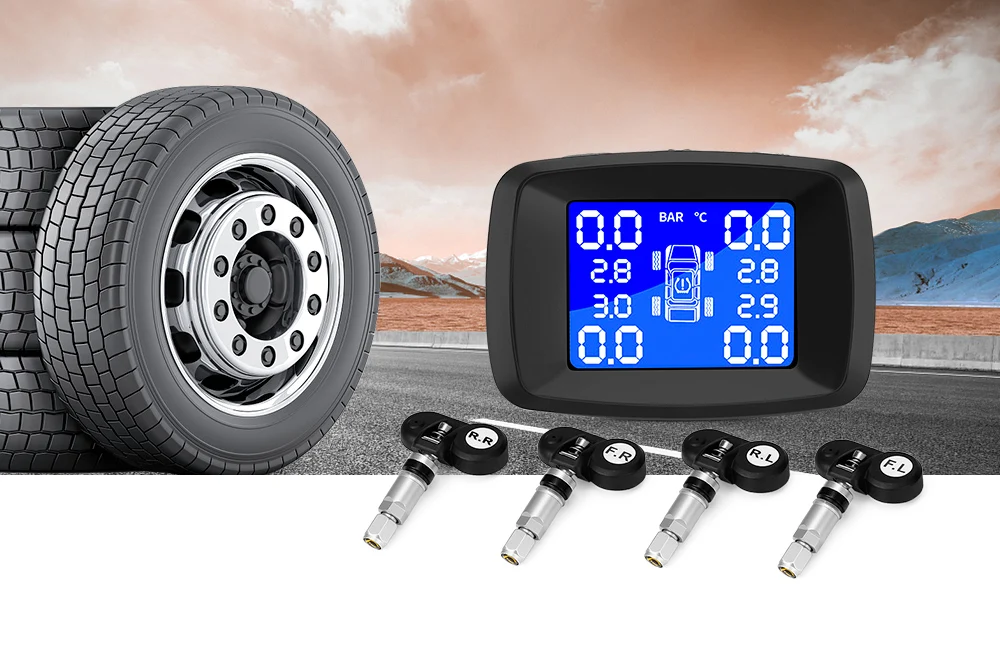
Sensors in a direct TPMS may even provide tire temperature readings. The direct tire pressure monitoring system sends all of this data to a centralized control module where it’s analyzed, interpreted, and, if tire pressure is lower than it should be, transmitted directly to your dashboard where the indicator light illuminates. A direct tire pressure monitor usually sends all of this data wirelessly. Each sensor has a unique serial number. This is how the system not only distinguishes between itself and systems on other vehicles, but also among pressure readings for each individual tire.
Many manufacturers use proprietary technology for these highly specialized systems, so replacing a TPMS in a way that’s consistent and compatible with your vehicle will require an experienced, knowledgeable technician.
-- Deliver actual tire pressure readings from inside the tire
-- Not prone to inaccuracies because of tire rotations or tire replacements
-- Simple resynchronization after tire rotation or tire replacements
-- Batteries inside the sensors usually last for about a decade.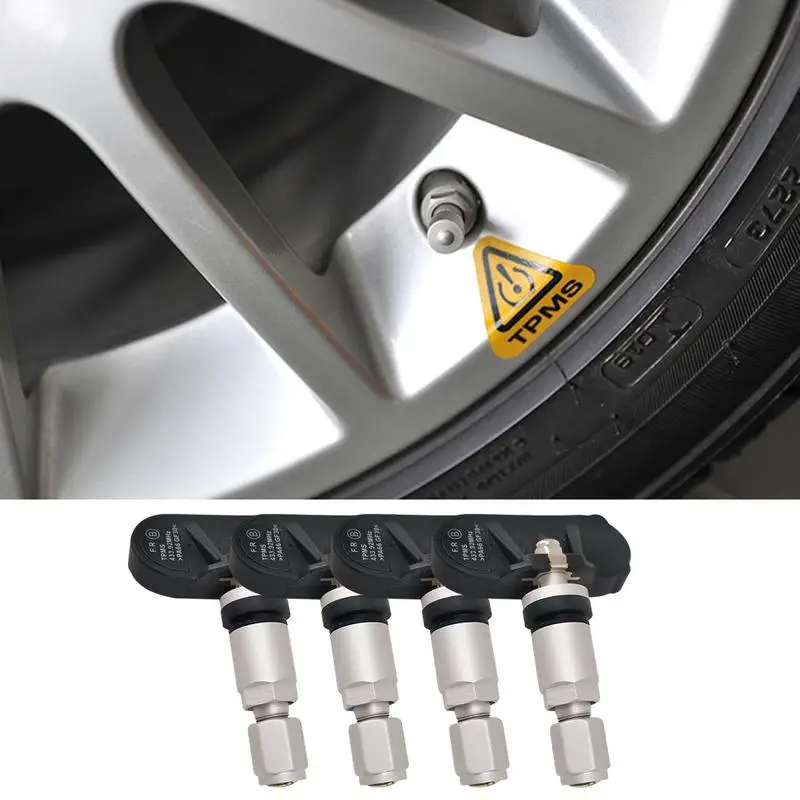
-- May be included in a vehicle’s spare tire
-- More expensive overall than an indirect TPMS
-- Though simple, resynchronization may require costly tools.
-- Battery rarely serviceable; if the battery is drained, the whole sensor must be changed.
-- Proprietary systems make installation, service, and replacement confusing for consumers and auto shops.
-- Sensors are susceptible to damage during mounting/demounting
Although the methods may be different, both systems serve the same purpose and activate the same indicator light. Even though a TPMS can deliver accurate alerts when properly maintained, it’s not a replacement for manual air pressure checks, consider it just another item in your car maintenance toolbox.
There’s never a good time for a flat. That’s why Bridgestone DriveGuard tires are masterfully engineered to keep you moving for up to 50 miles at speeds up to 50 MPH without disruption.
There’s never a good time for a flat. That’s why Bridgestone DriveGuard tires are masterfully engineered to keep you moving for up to 50 miles at speeds up to 50 MPH without disruption.
See Details Find Your Fit
From punctures to improper wheel alignments, there’s a lot that can affect or damage your tires’ ability to maintain pressure. Luckily many modern cars come with sensors to let you know in real-time if there’s a problem. But these tire pressure monitoring systems aren’t infallible, which is why some OEMs are working on updating them.
How does TPMS work?Your car’s TPMS, as with many of its other safety and driver-assistance features, relies on specialized sensors, Car and Driver reports. Many are mounted in the wheel, TirePlus reports or built into the tire’s valve stem. Most aftermarket systems, The Drive reports, are of one of these so-called ‘direct’ monitoring designs.
As the name implies, direct tire pressure sensors explicitly measure air pressure. These battery-powered sensors send radio signals to a receiver within the car. When the pressure gets too high or low, the TPMS warning light comes on.
RELATED: Why You Can’t Just Put Modern Tires on a Classic Car
Some cars, though, have tire pressure sensors linked into the ABS system. These ‘indirect’ sensors, Bridgestone explains, don’t actually measure pressure, though. Instead, they measure tire rotation. An improperly-inflated tire doesn’t roll at the same speed as a properly-inflated one. So, if the TPMS notices a speed imbalance, it triggers a warning light.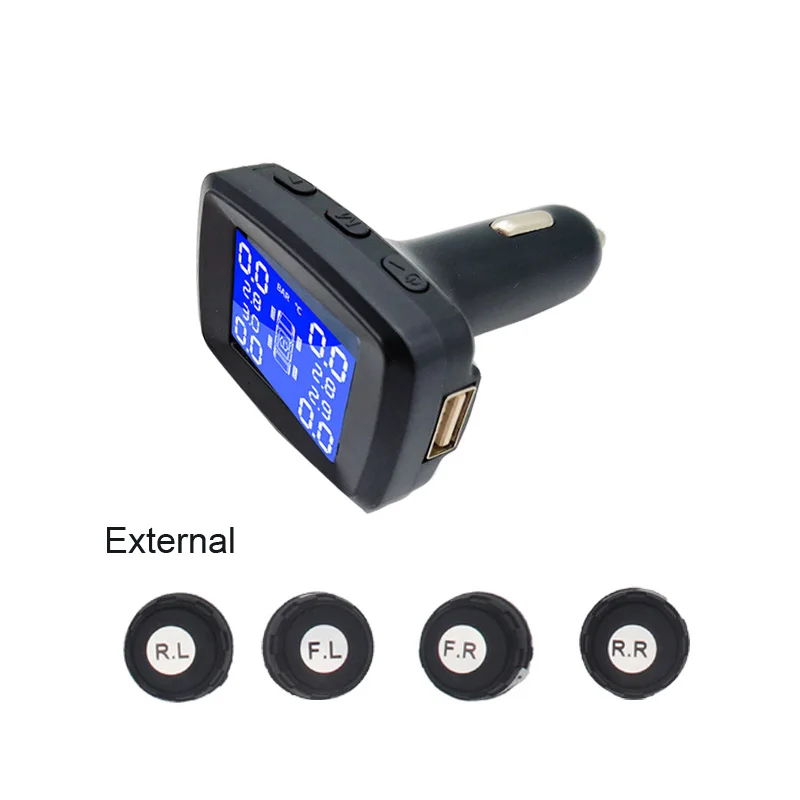
Recently, though, some suppliers have been trying to improve upon TPMS design. BMW and Michelin, for example, have collaborated on a ‘connected tire’ which uses sensors to measure not just pressure, but tire temperature, too. The goal is to use this data to provide the driver with valuable training feedback.
Microsoft and Bridgestone’s new tech can alert you of tire damage in real-time. https://t.co/WTHwWMMV0L
— The Drive (@thedrive) July 3, 2020
RELATED: When Do I Have to Replace All Four Tires?
In addition, The Drive reports Bridgestone and Microsoft are working on a system that can monitor tire damage as well as pressure. This new system would also detect if the tire hits a pothole or other irregularity, and tag it via GPS. Then, using vehicle-to-vehicle communication, it would let other cars know to avoid that spot.
As of this writing, Microsoft’s ‘TDMS’ is available in new VW, Nissan, Mitsubishi, and Renault vehicles. It’s unknown when, or if, the technology will spread to other brands. However, it could help prevent some of the problems which can plague conventional tire pressure sensors.
Can it fail or break?While TPMS is a helpful tool, it’s not infallible. Firstly, the warning light typically only illuminates when the tire pressure is at least 25% too low, Edmunds reports. Secondly, as with engine mounts, catalytic converters, or any other sensor, the ones in your tires can and do break.
RELATED: What Does It Mean When the Dashboard ABS Light Is On?
Because direct sensors are part of your wheel or tire, they’re subject to road imperfections. This means a severe-enough impact, such as with a deep pothole, can damage them. As can road debris or severe weather, Cars.com reports. Usually, that’s signaled by the TPMS light flashing, rather than staying lit.
In addition, tire pressure sensors operate using radio frequencies. If the signal gets blocked or encounters interference, you can experience a false malfunction light. This can happen, for instance, if you fit a snow tire that isn’t compatible with your TPMS.
View this post on Instagram
Tires: they’re your only points of contact with the ground when in a car. Do the smart thing and take care of them! . . Do your P.A.R.T. this National Tire Safety Week! . . P = Pressure | An underinflated tire can result in excessive wear and/or even a blowout. Every month take 5 minutes to check your tire’s air pressure. It’s safe, saves money, and more fuel efficient. . A = Alignment | Tires are out of alignment? They wear significantly faster and their performance is reduced. No need for a headache, just get your tires aligned! . R = Rotation | Not rotating your tires means uneven handling, traction, and wear. Save yourself money and be safer. Get your tires rotated! . T = Tread depth | Grab some spare change and get a hand from honest Abe himself. If you can see his head when you put the penny against your tire, it’s time for a new set!
A post shared by Tire Rack (@tirerack) on
Direct sensors, though, have one more potential failure point.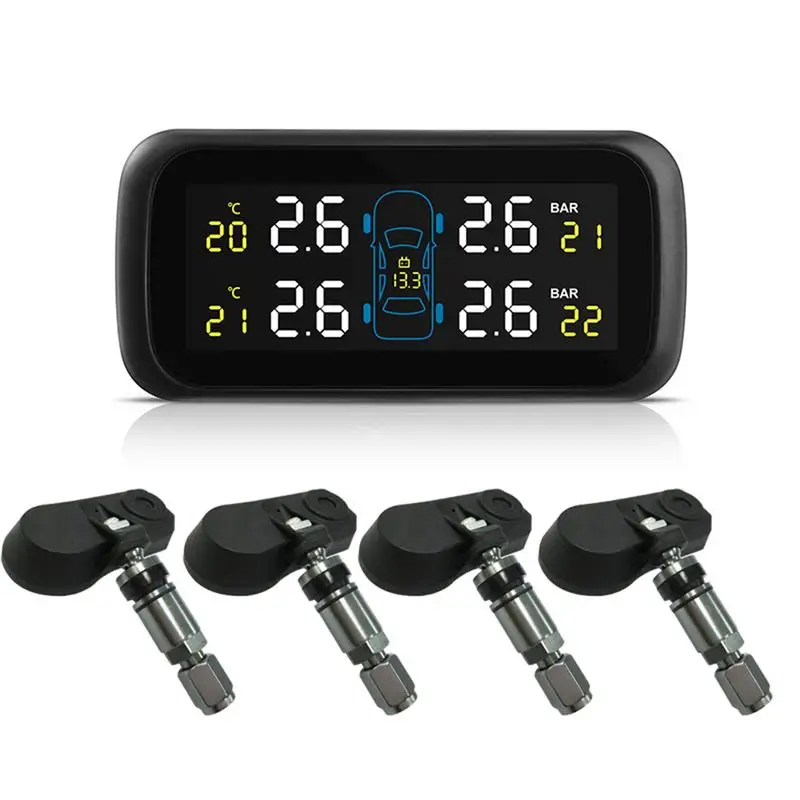 Unlike indirect ones, which are wired into the car’s electronics, direct tire pressure sensors have their own batteries. Over time, these go flat, and the whole sensor needs to be replaced. And, as with replacing sensors for adaptive cruise control or automatic emergency braking, this requires a system recalibration.
Unlike indirect ones, which are wired into the car’s electronics, direct tire pressure sensors have their own batteries. Over time, these go flat, and the whole sensor needs to be replaced. And, as with replacing sensors for adaptive cruise control or automatic emergency braking, this requires a system recalibration.
For all these reasons, while TPMS is a helpful tool, it shouldn’t replace a regular tire inspection.
Why is proper tire pressure important?OMSK, RUSSIA – OCTOBER 27, 2018: Checking tire pressure on a car fitted with winter tires | Dmitry Feoktistov/TASS via Getty ImagesMaintaining proper tire pressure may not seem as vital as, say, making sure your engine has enough oil. However, it is still an important maintenance task. That’s why OEMs put the recommended tire pressure on a sticker in the door jamb.
RELATED: Why Are Automakers Getting Rid of Spare Tires?
If a tire is under- or over-inflated, Car and Driver explains, it messes with the contact patch. This means your car doesn’t handle as well or as safely. That’s why Chevrolet attempted to use tire pressure to correct the rear-engine Corvair’s flaws. An incorrectly-inflated tire also doesn’t absorb shock as well, which could result in further suspension or TPMS damage.
Plus, a tire without enough pressure flexes more, AAA explains, which causes excessive heat and accelerated wear. Under-inflation also increases rolling resistance, which makes you burn more fuel.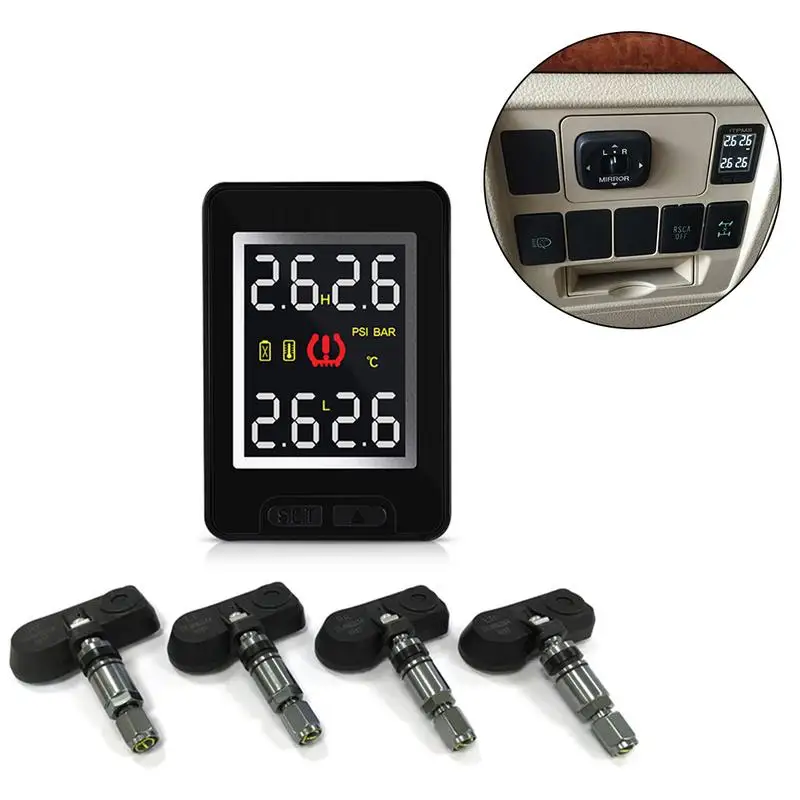
Follow more updates from MotorBiscuit on our Facebook page.
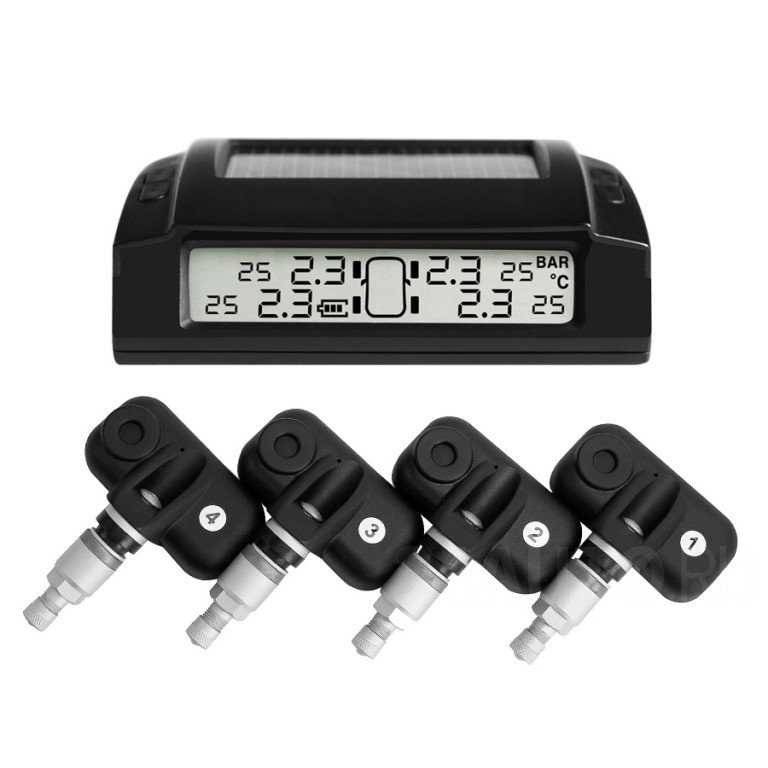 S.
S. 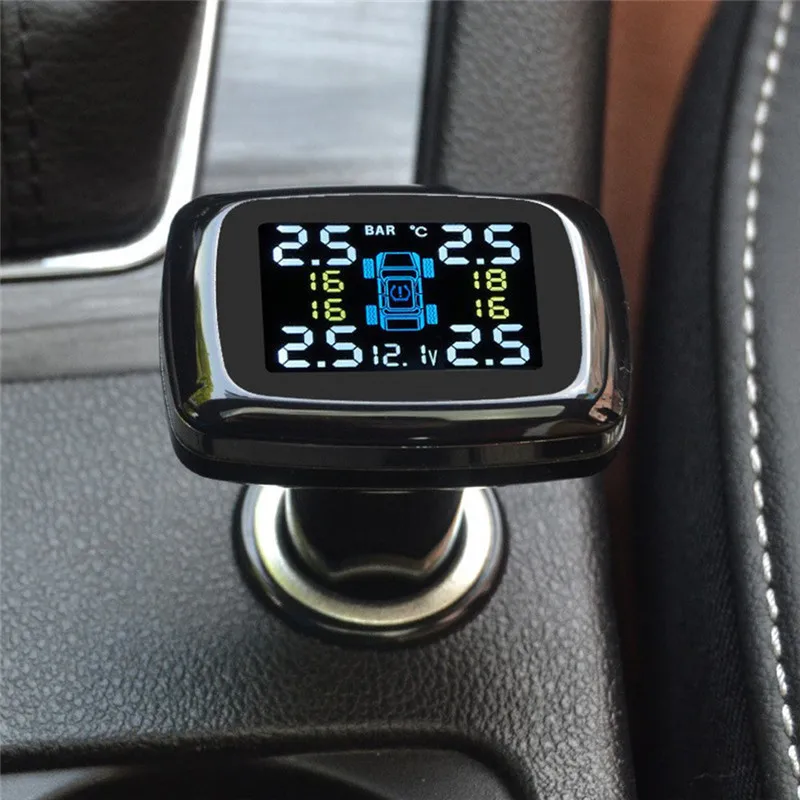 S.
S. | Vitaly Kabyshev, . Photo of manufacturers | |
| A punctured tire is always very annoying. But it is better to know about the flat tire in advance - this is where tire pressure sensors will help. |
The first patent for a tire was obtained in 1846, and since then the wheels have been constantly punctured. It is clear to anyone that a flat tire does not bode well. Yes, and dropped pressure can be very dangerous: it’s not for nothing that in the “Daily Maintenance” section of the car’s operating instructions, the item “Checking tire pressure” is one of the first.
When a tire "breathes", the rolling resistance increases significantly.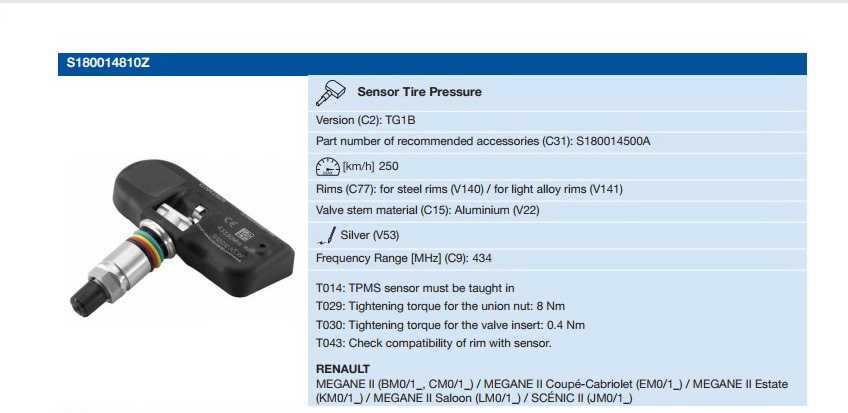 Where does this lead? To an increase in fuel consumption, increased tire wear and, of course, to the side slip of the car. Moreover, such a small drift to the side can be attributed to the slope of the road or rut. So the driver, by mistake or inexperience, can continue to move for quite some time. And the most dangerous thing about this is that in an emergency, for example, during a sharp maneuver or braking, a flat tire can break off the disc or turn over. And here it is not far from the accident.
Where does this lead? To an increase in fuel consumption, increased tire wear and, of course, to the side slip of the car. Moreover, such a small drift to the side can be attributed to the slope of the road or rut. So the driver, by mistake or inexperience, can continue to move for quite some time. And the most dangerous thing about this is that in an emergency, for example, during a sharp maneuver or braking, a flat tire can break off the disc or turn over. And here it is not far from the accident.
Therefore, this disgrace must be fought with all your might. And the sooner the driver notices the loss of pressure, the better. Of course, the easiest way is to check the pressure before the trip by connecting a pump or pressure gauge to each wheel in turn. But we are lazy and forgetful people. And the pleasure of poking around in the cold or in the rain with some kind of devices is small. Moreover, there is already a whole bunch of systems that can check this same pressure.
China-made caps indicate pressure loss by changing color. Informativeness is good, accuracy is questionable.
Informativeness is good, accuracy is questionable.
The simplest of them are special caps with color indicators that are installed instead of the standard caps on the boost valves. The pressure dropped below, say, two atmospheres - a warning yellow (orange, purple) strip will appear under the transparent cap of such a miracle cap. Yeah, it's clear that something is wrong with the wheel, we need to check. The pressure has dropped even lower - the cap will “paint” in a different, usually red color, which will indicate the criticality of what is happening. The advantage of this approach is simplicity. Minus - not enough good information content. After all, the caps can only be seen during a stop. Still, getting around the car before the trip, looking at the colors of the caps, is much easier than measuring the pressure every time.
Another disadvantage is that the caps start informing about the change in pressure only when it drops below some certain values, which, by the way, can be quite normal for your car and your wheels.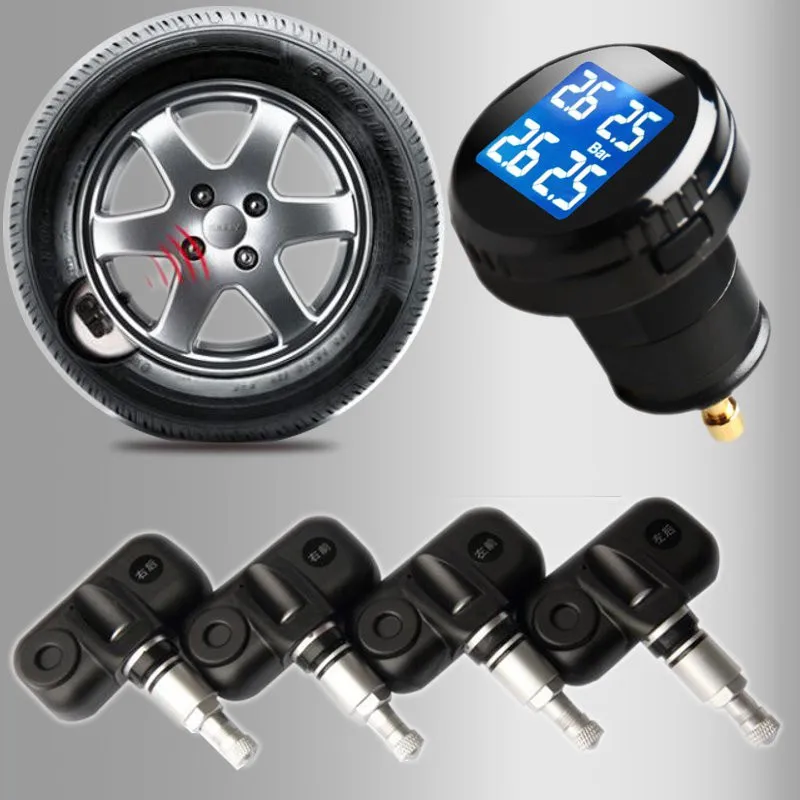 So, you need to select them exactly for your car.
So, you need to select them exactly for your car.
The radio sensors of many electronic monitoring systems are mounted on the disk using special clamps.
And in order to notice something wrong while driving, it would be nice to have an electronic system on board that would automatically notify you of dangerous pressure drops. And not just notify, but would do it on time (so that there was time to orient) and without false positives.
The installed control system in this case will warn the driver at the right time about a change in the corresponding parameter and give him enough time to stop the car safely. It is clear that in cases of a serious puncture or explosion of a tire, such systems will not help, since the driver will feel the car pull without any sensors. But with a “slow” puncture, such electronics are simply irreplaceable.
There are, for example, systems that transmit tire pressure and temperature data to the central unit via radio. And there are those who can transmit this data via Bluetooth to phones or communicators. Well, it's very convenient.
Well, it's very convenient.
X-Pressure pressure monitoring system developed by Pirelli. In the simplest version of Optic, it consists of four caps that are installed on regular valves. And they signal a drop in pressure by a change in color.
But there are more tricky systems that work without "real" pressure sensors, but through ABS. It is they who are usually put in the standard configuration of cars. How do they work?
Electronics with the help of sensors at each moment of time determines the speed of the wheels and their relative difference. As you know, when the pressure drops, the height of the tire profile becomes lower. Consequently, the speed of rotation of the wheel with the "sick" tire increases, therefore, the difference in the frequencies of rotation of the wheels on the same axle also increases. As a result, the system captures these changes - and gives an alarm signal.
Acoustic X-Pressure system. Sensors are built into the caps that register pressure, and radio transmitters that provide communication with the central unit.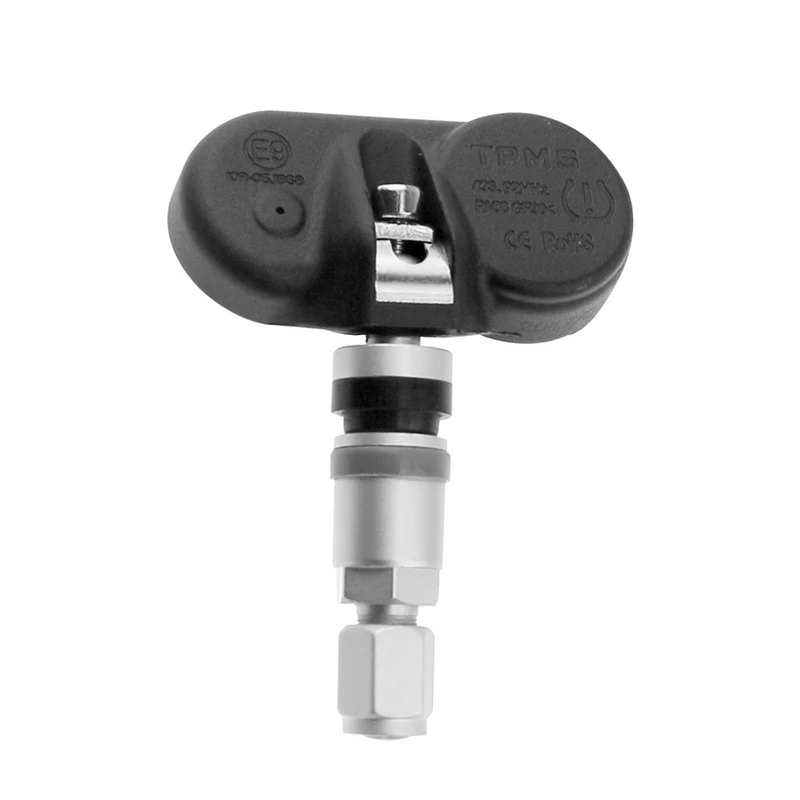 As soon as the pressure has dropped, a corresponding indication appears on the display of this unit and a warning sound signal is heard. Batteries in caps are enough for about 5 thousand hours of operation, which corresponds to five years of operation. Replacement of batteries in the caps is not provided, therefore, at the end of the service life, the set must be changed completely.
As soon as the pressure has dropped, a corresponding indication appears on the display of this unit and a warning sound signal is heard. Batteries in caps are enough for about 5 thousand hours of operation, which corresponds to five years of operation. Replacement of batteries in the caps is not provided, therefore, at the end of the service life, the set must be changed completely.
Why is this indirect method of determining tire pressure bad? Such systems can work, for example, in long turns, when for a relatively long time the system detects a large difference in the rotational speeds of the wheels of different sides (after all, the outer wheels spin at a higher speed than the inner ones). And these are flowers.
One of the more sophisticated X-Pressure options, AcousticBlue can transmit pressure data via Bluetooth to a mobile phone. There is such a thing from 160 euros.
In some cases, such systems are useless at all. For example, when tires with run-flat technology are installed on a car.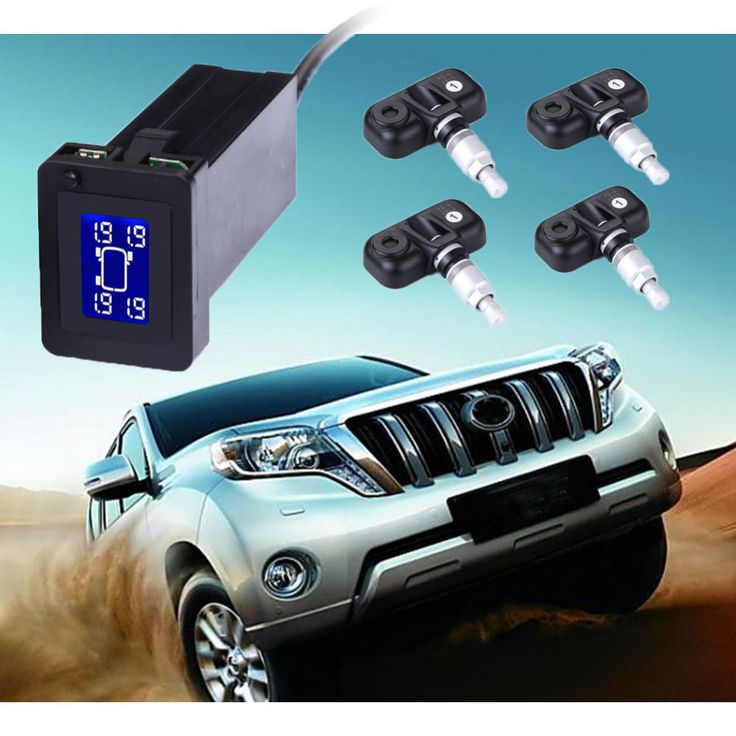 Recall that for tires with this technology, even with a complete loss of pressure, the profile height decreases slightly - by about 30-40%. There is no pressure in the tire, and the reinforced sidewalls continue to “hold”, and not just hold, but allow you to continue moving at a very decent speed, for quite a long time.
Recall that for tires with this technology, even with a complete loss of pressure, the profile height decreases slightly - by about 30-40%. There is no pressure in the tire, and the reinforced sidewalls continue to “hold”, and not just hold, but allow you to continue moving at a very decent speed, for quite a long time.
Many cars themselves warn their owner of a drop in tire pressure.
Still, this system can help a lot, especially on a long journey, warning in time that there are problems with the wheels. But relying on "helpers" is not completely worth it. Therefore, instead of the conclusion, we will write only two, no, three words. Watch the pressure, comrades! At least once a week, and if you notice that the wheel is flat, don't be lazy, pump it up.
Comments
Share
Like
Tweet
Send
© 2005–2022 Drive LLC, media registration certificate No. ФС77-69924 16+
Full version of the site
In America and Europe, a tire pressure monitoring system is an indispensable element of a car. Most likely, in the near future the same rules will be adopted in Russia.
Most likely, in the near future the same rules will be adopted in Russia.
But even if this system does not become mandatory, nothing prevents it from being installed in a car if the standard TPMS is not provided by the manufacturer: it is much better to find out in time that the wheel is flat than to wait for sad consequences.
TPMS (tire pressure monitoring system) monitors changes in tire pressure: even a small decrease in pressure in one wheel increases fuel consumption, worsens car handling and increases tread wear.
Now the pressure control system is divided into systems of direct (direct) and indirect (indirect) directions - we will tell you in more detail what it is.
In direct measurement systems, sensors are placed on the valves of all wheels. They can be installed inside or outside. The sensor detects the level of pressure in the wheel and transmits information via radio to the control unit.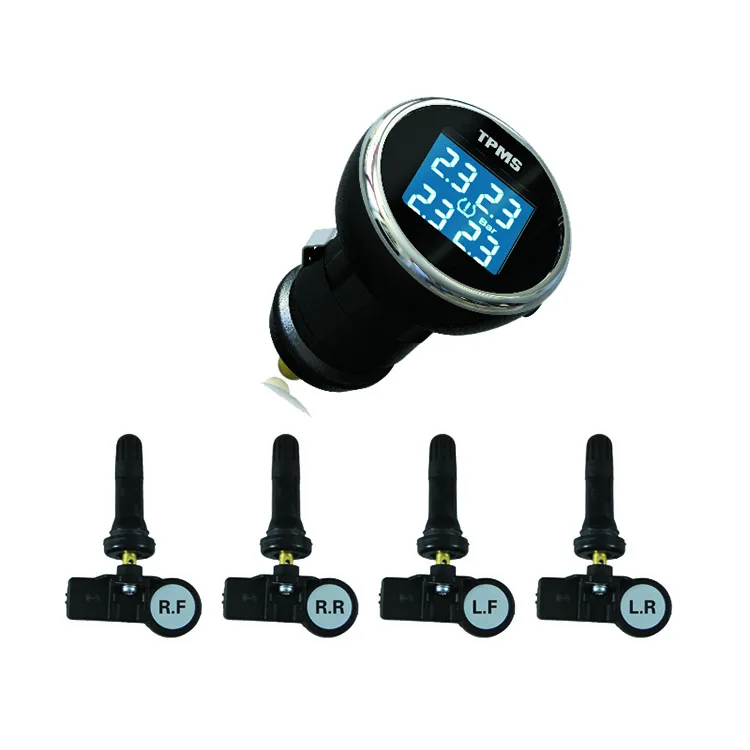 Here, the accuracy of the readings plays a big role - you can even track a decrease in pressure by only 0.1 bar.
Here, the accuracy of the readings plays a big role - you can even track a decrease in pressure by only 0.1 bar.
The "direct" system is more expensive than the "indirect" one, but it transmits information more accurately and faster. She, of course, has her own nuances: if you have to swap tires for even wear, then information about this will need to be entered into the control unit.
The so-called "indirect" TPMS is essentially a software extension for ABS: in its work it uses standard wheel rotation sensors. The system monitors changes in wheel speed and can diagnose tire pressure loss based on this information.
In this case, we are not talking about exact values, but only signals a significant deviation from the usual pressure - a significant deviation in this case is 0.3 bar, and a dangerous one - 0.5 bar.
"Indirect" systems may erroneously transmit a signal for a decrease in tire pressure also when:
Uneven load distribution
Frequent change from lane to lane
slippage
Sharp descents and ascents
But this can be adjusted, for example, by setting an alert delay. You can also reboot the system so that it adjusts to different tire pressures at startup.
You can also reboot the system so that it adjusts to different tire pressures at startup.
The AIRLINE range includes 2 models of the "direct" system.
Tire pressure monitoring system TPMS BLACK ATP-MS-01 includes 4 sensors and a receiving module with a color LCD display. The sensors are mounted on the nipple of the car wheel, measure the pressure and air temperature in the tire and transmit information about the pressure value via radio to the display. When the tire pressure changes, the system transmits information with sound signals and displays it on the display. The pressure and temperature thresholds are set in the display menu. The system can be installed independently - it does not require special skills.
The receiving module is powered by the car's cigarette lighter socket, there is also a USB output for convenient parallel charging of the smartphone. The kit includes a receiver with a display, 4 external pressure sensors, 4 locknuts, a kit for mounting sensors, a warranty card and instructions.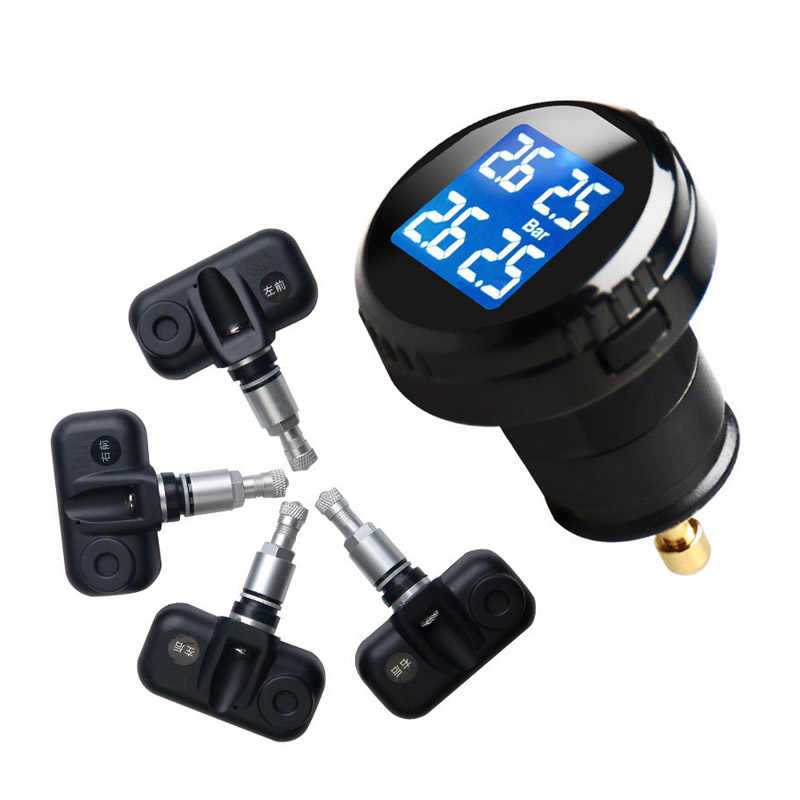 The operating temperature of the sensors is from -40°С to +125°С.
The operating temperature of the sensors is from -40°С to +125°С.
Tire pressure monitoring system TPMS wireless INSIDER SOLYAR ATP-MS-02 includes 4 sensors and a receiving module with a color LCD display. When the tire pressure changes, the system transmits information with sound signals and displays it on the display. The sensors are marked position, but the wheels can be swapped, everything is reconfigured. The operating temperature of the sensors is from -40°С to +125°С.
The kit includes a double-sided adhesive tape for fixing the receiving module on the dashboard of the car, it can also be mounted on a Velcro mat.
The receiver module is powered by a built-in lithium-polymer battery, which is charged by a built-in solar panel or a microUSB socket. The kit includes a receiver with a display, internal sensors, a USB-microUSB cable, double-sided tape, a warranty card and instructions. Tire fitting is required for installation, so we recommend contacting a service center for proper installation.